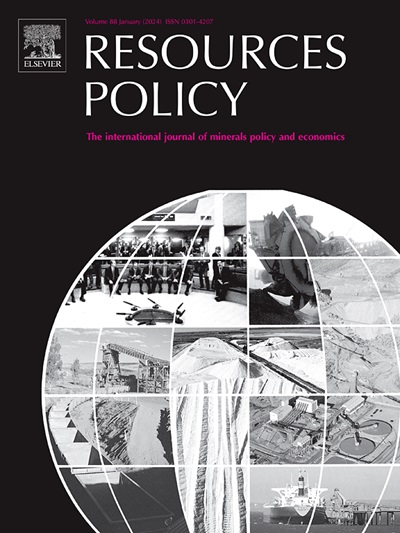Mobilizing FDI in natural resources in the post-COP28 era: Spatial drivers, natural capital, and sustainability dynamics
IF 10.2
2区 经济学
0 ENVIRONMENTAL STUDIES
引用次数: 0
Abstract
This study examines the dynamic determinants of resource-related Foreign Direct Investment (FDI) using a panel dataset spanning from 2000 to 2022. By employing an Error Correction Model with Spatial Autoregression (ECM-SAR) and a Smooth Transition Autoregressive (STAR) model, we explore both the short-run and long-run drivers of resource FDI while accounting for spatial dependencies and nonlinear threshold effects. The results confirm the significant role of market size, human capital, and economic prosperity in attracting resource-related FDI, while excessive government intervention and stringent environmental policies exert a deterrent effect. Our findings reveal strong persistence in resource FDI flows, with past investment decisions heavily influencing current inflows. Population size and human capital emerge as robust determinants, reinforcing the importance of labor market dynamics in investment decisions. The analysis also uncovers spatial dependencies, indicating that FDI in one country is influenced by investments in neighboring regions. Furthermore, the STAR model highlights nonlinearities in FDI determinants, suggesting that threshold effects shape investment behavior, particularly concerning government intervention and resource dependence. The policy implications emphasize the need for balanced regulatory frameworks that encourage investment while maintaining sustainable environmental and economic policies.
在cop28后时代调动自然资源领域的外国直接投资:空间驱动因素、自然资本和可持续性动态
本研究使用2000年至2022年的面板数据集考察了与资源相关的外国直接投资(FDI)的动态决定因素。通过采用空间自回归误差修正模型(ECM-SAR)和平滑过渡自回归模型(STAR),我们在考虑空间依赖性和非线性阈值效应的同时,探讨了资源FDI的短期和长期驱动因素。研究结果证实,市场规模、人力资本和经济繁荣程度对吸引资源相关FDI具有显著作用,而过度的政府干预和严格的环境政策则具有威慑作用。我们的研究结果显示,资源FDI流动具有很强的持久性,过去的投资决策严重影响当前的流入。人口规模和人力资本成为强有力的决定因素,强化了劳动力市场动态在投资决策中的重要性。分析还揭示了空间依赖关系,表明一个国家的外国直接投资受到邻近地区投资的影响。此外,STAR模型强调了外国直接投资决定因素的非线性,表明门槛效应影响了投资行为,特别是在政府干预和资源依赖方面。政策影响强调需要平衡的管理框架,鼓励投资,同时维持可持续的环境和经济政策。
本文章由计算机程序翻译,如有差异,请以英文原文为准。
求助全文
约1分钟内获得全文
求助全文
来源期刊

Resources Policy
ENVIRONMENTAL STUDIES-
CiteScore
13.40
自引率
23.50%
发文量
602
审稿时长
69 days
期刊介绍:
Resources Policy is an international journal focused on the economics and policy aspects of mineral and fossil fuel extraction, production, and utilization. It targets individuals in academia, government, and industry. The journal seeks original research submissions analyzing public policy, economics, social science, geography, and finance in the fields of mining, non-fuel minerals, energy minerals, fossil fuels, and metals. Mineral economics topics covered include mineral market analysis, price analysis, project evaluation, mining and sustainable development, mineral resource rents, resource curse, mineral wealth and corruption, mineral taxation and regulation, strategic minerals and their supply, and the impact of mineral development on local communities and indigenous populations. The journal specifically excludes papers with agriculture, forestry, or fisheries as their primary focus.
 求助内容:
求助内容: 应助结果提醒方式:
应助结果提醒方式:


